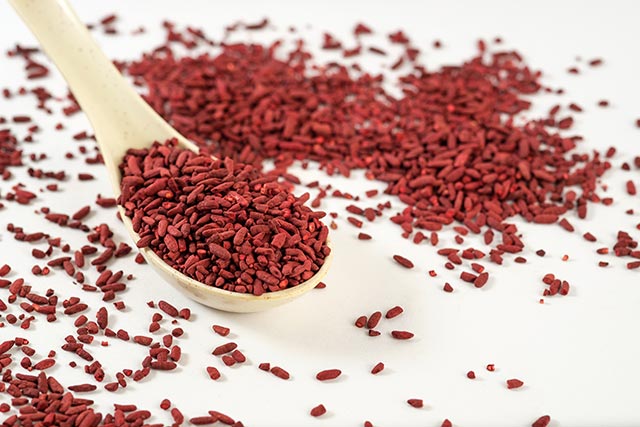Kids with heart disease? 25 Percent of children and adolescents in America have clinically high cholesterol levels
12/12/2019 / By Zoey Sky

High cholesterol is a major risk factor for poor circulation, heart attacks and strokes. Fortunately, the cholesterol levels of kids and teens in America have improved from 1999 to 2016.
However, a study has found that only 50 percent of children and adolescents are in the ideal range, while an alarming 25 percent are in the clinically high range.
Understanding the heart health of kids in America
Dr. Amanda Marma Perak, a cardiologist at Ann & Robert H. Lurie Children’s Hospital of Chicago, led the study, which was published in the Journal of the American Medical Association. This is the first study to tackle the predicted prevalence of high cholesterol in children in recent years.
Researchers studied nationally representative data from over 26,000 children and adolescents aged six to 19.
Perak, who is also an Assistant Professor of Pediatric Cardiology and Preventive Medicine at Northwestern University Feinberg School of Medicine, explained that high cholesterol in childhood is one of the major risk factors for developing heart disease in adulthood.
While data has shown that measures of cholesterol in children and adolescents have been improving in the last few years, Perak recommends the implementation of effective measures to make sure that more children have healthy cholesterol levels. Research has shown that high cholesterol has a role in the formation of atherosclerotic plaques in the arteries. When a child has high cholesterol, these changes in the blood vessels can increase their risk of a heart attack later in life.
Ideal measures for children and adolescents should be within the range of the following:
- Total cholesterol (TC) – Must be less than 170 milligrams per deciliter (mg/dL).
- LDL (low-density lipoprotein) – LDL or “bad” cholesterol must be at less than 110 mg/dL.
- HDL (high-density lipoprotein) – HDL or “good” cholesterol must be greater than 45 mg/dL.
Generally, these levels are associated with better long-term health.
Recent guidelines from the National Heart, Lung and Blood Institute suggest that children must have their cholesterol levels checked at ages nine to 11 years and again at 17 to 21 years to maintain overall heart health.
Perak commented that if a child had borderline-high or high levels of cholesterol, parents or guardians could help improve those levels by making positive lifestyle changes, like following a healthier diet and increasing physical activity. (Related: 7 Predictors of heart health, plus simple ways to reduce cardiovascular disease risk.)
Making changes to children’s habits is better and safer than putting them on cholesterol-lowering medications like statins that cause negative side effects such as diabetes, liver damage or memory problems.
Researchers shared that the improving cholesterol trends observed in the study were surprising since obesity is one of the factors that is often linked to abnormally high cholesterol levels. The findings were also unusual since childhood obesity continues to skyrocket as the years go by.
Perak said that further study will help determine the improvements in cholesterol trends. She added that certain factors that influence cholesterol could also be improved, like decreased trans fats in food products.
Parents and guardians shouldn’t be complacent about the cholesterol level of children, especially since it is a key driver of cardiovascular disease. Perak concluded that they are hopeful about the future heart health of kids in the US.
5 Foods that lower cholesterol
Serving nutritious meals to your family can help improve their heart health. If you are worried about the cholesterol level of your kids, prepare foods that can help lower cholesterol naturally.
Apples
Apples are rich in pectin, a type of fiber that helps lower levels of LDL cholesterol. Apples are also full of beneficial antioxidants that help prevent LDL cholesterol from oxidizing, which can clog arteries and cause inflammation.
Beans and legumes
A daily half-cup serving of beans or legumes can help lower your LDL cholesterol by an average of at least five percent in six weeks. Beans are rich in soluble fiber that helps eliminate cholesterol from your bloodstream.
Fatty fish
Make sure your kids eat about two 3.5 oz servings of fatty fish like herring, mackerel, salmon, trout or tuna weekly. Fatty fish contains omega-3 fatty acids that help reduce triglycerides, which are a type of cholesterol-like fat in the blood that harden or thicken your arteries.
Nuts
Eating tree nuts like almonds, pistachios and walnuts can help lower levels of total cholesterol, LDL cholesterol and triglycerides. Nuts contain fiber, omega-3 fatty acids, plant sterols, unsaturated fats and vitamin E.
However, nuts are also high in calories. Monitor your portions and serve only a small handful or two tablespoons of nut butter.
Oats
Consuming five to 10 grams of soluble fiber per day can help lower LDL cholesterol by at least 11 points. Since your intestine can’t absorb soluble fiber, it binds to cholesterol in the blood and eliminates it from the body.
Oats are a great source of soluble fiber. A half-cup of cooked oats contains about two grams of soluble fiber.
Serve nutritious meals and encourage your kids to play outdoors regularly to lower their cholesterol and help them maintain their heart health.
Sources include:
Tagged Under: adolescents, balanced diet, blood pressure, cardiovascular health, children's health, cholesterol, exercise, fightobesity, heart attack, heart disease, heart health, prevention, regular exercise
RECENT NEWS & ARTICLES
ReverseHeartDisease.News is a fact-based public education website published by Reverse Heart Disease News Features, LLC.
All content copyright © 2018 by Reverse Heart Disease News Features, LLC.
Contact Us with Tips or Corrections
All trademarks, registered trademarks and servicemarks mentioned on this site are the property of their respective owners.



















